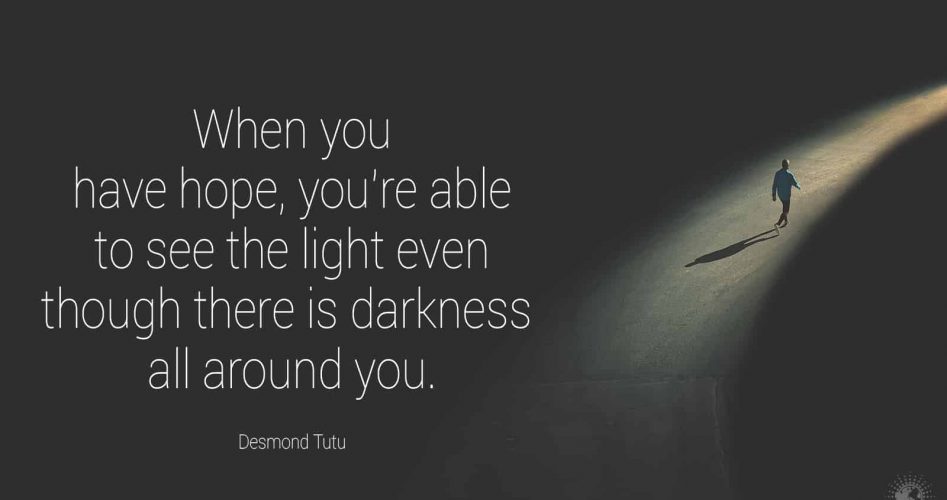The world could certainly use some hope and kind words. With all the struggles that you face both personally and globally, it’s easy to become downtrodden.
You can let anxiety and depression sink in, and it can easily stifle you emotionally.
Thankfully, there is power in the spoken word. Did you know that some ancient writings say that the tongue holds the real power of life or death? Think about that for a minute. If you spew negativity and hateful things from your mouth, it can affect your health and entire character.
However, when you speak positive affirmations and spread goodness and joy, it helps your psyche cope with things, and it can improve your health. It’s strange how your words can have such an impact on your life, but research has proven this theory repeatedly.
People are generally divided into two categories: the pessimist and the optimist. Which category do you fall into? Do you see the glass as half empty, or is it half-full? Your perceptions and views will mold and make who you are.
Speaking Kind Words of Hope in Times of Great Uncertainty
If you want to reduce stress and speak life back into your tired and weary soul, then there are positive and kind words that you can say over yourself and others. If you want to spread hope and joy for all, then incorporate these phrases into your life and speech.
1. “If you’re patient, you’ll be compensated for every disappointment in life.” Henry David Thoreau
2. “When you have hope, you’re able to see the light even though there is darkness all around you.” Desmond Tutu
3. “The good in this world is worth fighting for.” J.R.R. Tolkien
4. “I get by when I stop dwelling on my misery; rather, I tend to focus on the beauty and love that remains.” Anne Frank
5. “Weeping may remain, but for the night, but rejoicing comes in the morning.” English Proverb
6. “You can accomplish great things in this world if you keep trying even when there seems to be no hope.” Dale Carnegie
7. “Use your talents to carve a tunnel of hope through your darkest mountain.” Rev. Dr. Martin Luther King Jr
8. “Hope means to keep believing even when everything seems doomed, or it seems as if there is no purity left in the world at all. When you feel that everything is hopeless, you develop the strength to fight another day.” G.K. Chesterton
9. “It doesn’t matter how far your journey or where you go, as long as you don’t stop.” Confucius
10. “You will find your greatest victories come in life, not when you fall, but in every time that you rise.” Confucius
11. “Hope is as delicious and sweet as bread to a poor man.” Gary Herbert
12. “If you are without hope, then you cease to live.” Fyodor Dostoyevsky
13. “Frequently, the failures you experience in life are merely because you didn’t realize how close you were to success, and you gave up too soon.” Thomas Edison
14. “Use your mistakes from yesterday to live for today and use your successes of today to have hope for tomorrow.” Albert Einstein
15. “There are many dark nights, but there are always brighter days.” Tupac
Speaking Kind Words to Redirect Your Life
Positive affirmations are meaningful. These powerful statements help you to change the way you think. Simple, kind words can be useful tools to reprogram your subconscious mind.
It can help you build new habits, get rid of bad ones, and motivate you to succeed. The human mind is powerful, and few taps into the superpowers that lie therein. You can think and imagine things even if they don’t exist right now, and by envisioning situations in a new reality, you mentally make provisions for them.
By focusing your thoughts on positive affirmations, you can start acting on the behaviors you speak to reinforce the goodness in life rather than the negativity.
You might compare your brain to a computer. When you’re working on a laptop, you plug the data into the system to get it to do what you want it to. By using specific commands and programs, you can do amazing things with the touch of a button.
Now, you are so accustomed to getting your computer to do what you want that you don’t even think twice about the processes involved. The same thing can happen to your brain. When you use positive and friendly words, you are programming your mind for greatness, and it’s going to react.
While you may think that it sounds like supernatural hogwash, it’s not magical. The mental laws are immensely powerful and yet quite simple.
Why Do Positive Affirmations Work?
Positive statements or kind words can be used to reduce stress, help you gain control over a seemingly impossible situation in life, or conquer negative habits. When you speak positivity over and over, it’s not long before it becomes your mindset.
Positivity allows your subconscious to grow more robust, and it will affect your entire life. When you fill your vessel with optimism, you will develop new ideas, see opportunities that you didn’t before, and make a stand to become a better you. Think of affirmations as words with power behind them.
Fifteen Positive Affirmations to Turn to Daily
Here are 15 positive affirmations and kind words that you should speak over yourself and others every day. Chart your progress and see how different your life has become when you look at life through optimism.
1. I am pleased and effective in everything I do.
2. I will put my emphasis on contentment and positivity.
3. Today, I vow to do something that will enhance my life.
4. I am thankful for my loving partner to share my joys with.
5. I love everyone around me.
6. My life is full of love and happiness.
7. Today, I will go out of my way to show love and kindness to others.
8. I’m loved and respected by all who know me.
9. I have the energy and motivation to get done my tasks.
10. I love my job, and am thankful for the money it brings.
11. Today, and every day, I feel I am improving my outlook and becoming more positive.
12. I am thankful for all that I have.
13. I’ll let my ambitions drive my future.
14. I am attractive, and anyone would be lucky to be with me.
15. I will seize the day and make magic happen.
Final Thoughts on Why We Must Share Kind Words and Spread Hope
A study was done in 2018 by the students at a university in Dubai. They used 30 plants, grouped in pairs by identical species. Fifteen plants were praised as the students spoke positively to it.
However, the other 15 plants were spoken to in a negative manner and cursed at. They said things like, “you’re ugly, you will never be as big and beautiful as the other plants, and you’re going to die.” Ikea sponsored the project at Wellington Academy, hoping to get to the bottom of the often bogus believed claim.
Researchers dubbed the study “Bully a Plant” to raise awareness of how harmful bullying can be to people, let alone plants. They documented the study on video for all the world to see. The results were uncanny.
The plants that received the negativity and all the harsh comments had droopy leaves and were dramatically different than the other foliage. While they had equally received the same water, food, and things essential for survival, the negativity had a dramatic impact.
While this study is about plants, it can be related to humans. Being always told how worthless you are and how you will never be as good as your brother or sister is very detrimental. If you grew up in a home where you were always seen as less than others, then you might have a negative outlook on life.
Thankfully, you have the power to change all of this. Your kind words and positive affirmations that you speak into your mind and soul can change you and those around you. Spread hope and joy around you to others by filling them with goodness and hope.
Be the person that everyone wants to be around and the one who has a smile on their face and a spring in their step. What changes can you make today to change your tomorrow? You only have one life to live, so it’s essential to make it the best one you can.






